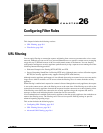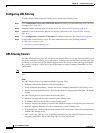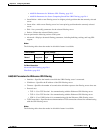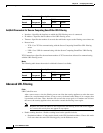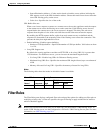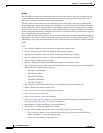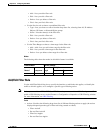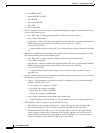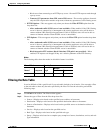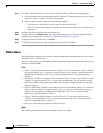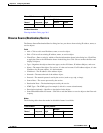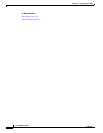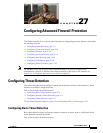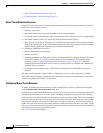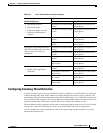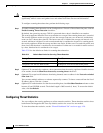
26-9
Cisco ASDM User Guide
OL-16647-01
Chapter 26 Configuring Filter Rules
Filter Rules
–
Block users from connecting to an HTTP proxy server—Prevent HTTP requests made through
a proxy server.
–
Truncate CGI parameters from URL sent to URL server—The security appliance forwards
only the CGI script location and the script name, without any parameters, to the filtering server.
• HTTPS Options—This area appears only when you choose the Filter HTTPS option from the
drop-down list.
–
Allow outbound traffic if URL server is not available—When enabled, if the URL filtering
server is down or connectivity is interrupted to the security appliance, users will be able to
connect without URL filtering being performed. If this is disabled, users will not be able to
connect to Internet websites when the URL server is unavailable.
• FTP Options—This area appears only when you choose the Filter FTP option from the drop-down
list.
–
Allow outbound traffic if URL server is not available—When enabled, if the URL filtering
server is down or connectivity is interrupted to the security appliance, users will be able to
connect without URL filtering being performed. If this is disabled, users will not be able to
connect to Internet websites when the URL server is unavailable.
–
Block interactive FTP sessions (block if absolute FTP path is not provided)—When
enabled, FTP requests are dropped if they use a relative pathname to the FTP directory.
Modes
The following table shows the modes in which this feature is available:
Filtering the Rule Table
It can be difficult to find a specific rule if your rule table includes a lot of entries. You can apply a filter
to the rule table to show only the rules specified by the filter. To filter the rule table, perform the
following steps:
Step 1 Click Find on the toolbar. The Filter toolbar appears.
Step 2 Choose the type of filter from the filter drop-down list:
• Source—Displays rules based on the specified source address or hostname.
• Destination—Displays rules based on the specified destination address or hostname.
• Source or Destination—Displays rules based on the specified source or destination address or
hostname.
• Service—Displays rules based on the specified service.
• Rule Type—Displays rules based on the specified rule type.
• Query—Displays rules based on a complex query comprise of source, destination, service, and rule
type information.
Firewall Mode Security Context
Routed Transparent Single
Multiple
Context System
• • • •—



